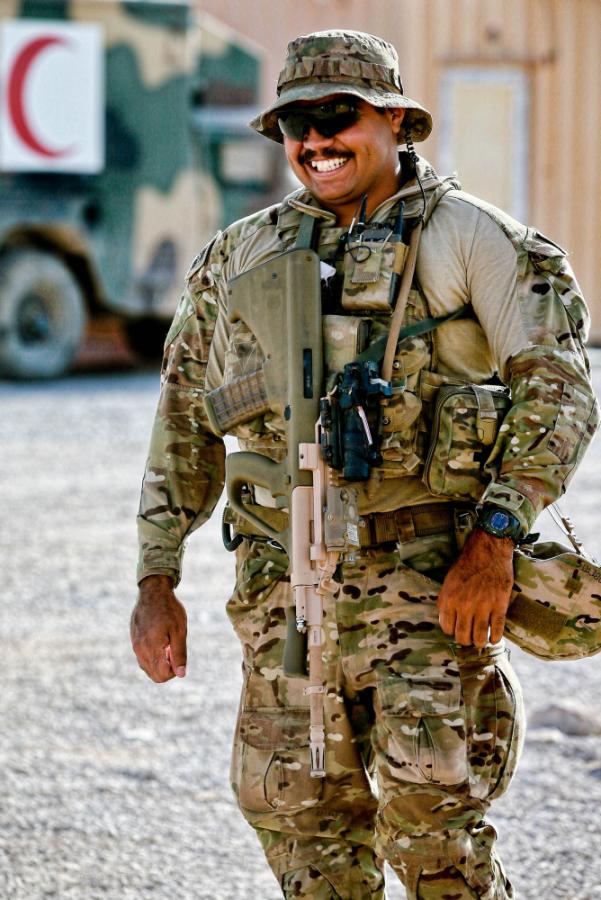Andrew Roberts

Private Andrew Roberts is descended from a renowned Kamilaroi warrior, Gambu Ganuurru. Nicknamed the Red Kangaroo, Ganuurru was never defeated in battle. The Kamilaroi tribe prospered under his leadership, controlling an area that extended far across New South Wales.
Roberts is not the first in his family to serve in the military. His great-grandfather, William Chatfield, was a trooper with the Australian Light Horse during the First World War. Chatfield was 21 when he volunteered for service in March 1918, but was initially rejected on the basis of skin colour. The first medical examiner declared that Chatfield had an, “unsuitable physique (colour)”, while a second wrote: “physique not suitable to stand English or continental climate”.
Chatfield was not deterred, however, and made a second attempt to volunteer several months later. This time he was successful as restrictions on recruitment had begun to ease, and soon found himself en route to the Middle East. There Chatfield served as part of the 1st Light Horse Regiment until the Ottoman Empire surrendered in late October 1918.
Nearly a century later, Private Andrew Roberts followed in his great-grandfather’s footsteps, travelling to the Middle East with the 7th Battalion, Royal Australian Regiment (7RAR) to take part in operations in Afghanistan. Australian forces have been stationed in this region for more than a decade, assisting to create a safer environment, diminish the influence of terrorist groups, and rebuild schools, roads, and hospitals.
Roberts served with the 2nd Cavalry Regiment Task Group Force Protection Platoon based at the multinational base in Tarin Kowt. He worked with the Security Forces Assistance Advisory Team, which was responsible for mentoring the fledgling Afghan National Army. Roberts enjoyed working alongside the Afghan soldiers, saying, “We were always welcomed and offered food and chai by the Afghans, as they are very friendly people.”
Activities for research and discussion
1. Does your family have any legends that have been passed on through generations? Use this legend or the story of the Red Kangaroo as inspiration to write your own short story.
2. Why do you think Roberts’ great-grandfather William Chatfield was successful on his second attempt to enlist for service in the First World War? What might have changed?
3. Chatfield chose to wear his AIF uniform on his wedding day. Why might he have done this?
4. Look at the photos below: how would you describe the environment in Afghanistan?
5. What skills might be important for Australian troops to pass on to the Afghan National Army?

